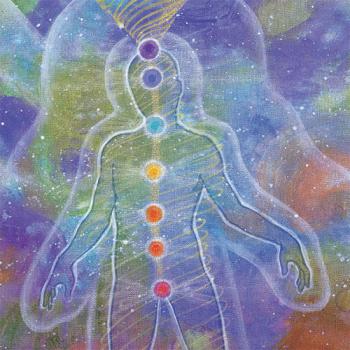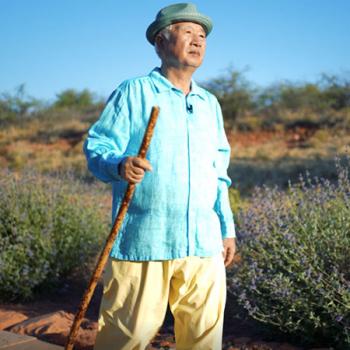
Like so many other practices, the early teachings of Brain Education form the foundation of what is to come. Step 1 of Brain Education, called Sensitizing, is about the fundamentals—better health, less stress, and more energy. And, it is about discovering the value and potential of your brain. Without these things, the next steps are practically useless. While some other practices de-emphasize the body, this is not the case in Brain Education. In fact, you learn to understand and appreciate your body, and especially your brain, in ways that you probably have not in the past.
Appreciating Your Amazing Brain
One fundamental tenant of Brain Education is belief in the power of the human brain. Your brain is amazing, and it is important for you to know that. Sadly, some people do not have that basic belief. They do not believe that they are smart enough or talented enough to create the life that they really want, so they hold themselves back. That’s why in Brain Education we begin with basic understanding of how the brain works.
This includes some very basic discussion of the parts of the brain, just enough so that one may appreciate their functions and visualize them during meditative visualization of the brain. For example, when sending energy to the brain, it can be helpful to know that the brain stem plays an important role in regulating our stress responses or that the prefrontal cortex in the center of our decision-making processes.
Neuroplasticity is another important neurological concept referenced in Step 1 of Brain Education. The term refers to the brain’s ability to continually rewire and rearrange its neurons. This feature is what allows us the ability to learn and grow throughout life. If we use neuroplasticity to its fullest extent, we can change our physical habits, such as smoking or overeating, as well as our mental and emotional patterns, which is dealt with more directly in Brain Education Step 2.
Finally, we focus on opening all the senses of the body. These five senses—sight, smell, touch, hearing, and taste—are how our brains interact with the world, so they are very important for forming our perceptions. Most people, however, do not use all of them fully, instead relying more on just sight and sometimes sounds. By opening to all the senses, you open yourself to a broader understanding of the world.
All of this leads toward an important goal of Brain Education for every practitioner—developing a Power Brain, a brain that is healthy, happy, peaceful, and productive.
Energy Studies 101
Although we conventionally refer to five senses, people sometimes refer to a “sixth sense,” an ability to sense something beyond what is perceived by the usual senses. Some people think this is a myth, something that is fun to watch in movies, but that is not real. Personally, I believe in this sixth sense, and I do not believe that it is something that only special people can use. Rather, I believe that the “sixth sense” is simply our natural ability to sense energy. A Power Brain person uses all the potential of the brain, so it is important to recover this forgotten sense.
In the first step of Brain Education, we introduce people to their own ability to sense the presence of energy. We start with something called Jigam, which is a simple meditative exercise focused on feeling energy on the surface of the palms. No special talent is needed to succeed at this; most people feel energy on the first try, and everyone feels it after a little practice.
Then, we provide people with a basic understanding of the energetic anatomy of the human body, as Asian medical practitioners have understood it for thousands of years. They learn about the meridians of the body, which are energy pathways that carry energy to the various organs of the body. Brain Education Step 1 includes many meridian exercises that are designed to keep energy flowing on these pathways. Practitioners also learn about important energy points on the body, places where energy blockages can be released by pressing or tapping.
In Brain Education Step 1, practitioners focus on awakening the body’s senses in a full spectrum, which helps to create a stronger body, better health, and a more stable mind.
Bringing the Fire Down to Have a Cool Head
Brain Education Step 1 has one very practical benefit to those who practice it—stress relief. Numerous studies have linked stress to all sorts of diseases—heart disease, obesity, high blood pressure, auto-immune diseases, asthma, and many more. Even if no disease has yet developed, people still feel discomfort from stress—knots and tension in the muscles, poor digestion, stiff joints, and frequent headaches. Practitioners often see rapid improvement in these conditions during Brain Education Step 1, basically because their bodies are finally placed in proper energy balance and circulation, what we call the “water up, fire down” state. With this optimal energy balance, you develop a cool head and a warm abdomen.
People are often off-kilter these days because of too much mental activity and too little physical activity. That means that energy circulation is upside down—fire up and water down. In other words, hot fire energy is pooling in the head, while the lower body remains cold and inactive. If you have experienced a busy, stressed-out mind and a tense, under-exercised body, you have felt this condition. As Step 1 practitioners open the energy system and learn to bring energy into the lower body, they also experience great relief from stress-related conditions, which are so common in today’s world.
Move Your Body, Use All Your Senses
Of course, all I can do here is tell you about the practices in words. But they won’t be of any practical value to you until you start doing something. Naturally, I would love to have you join us by taking a class at a center or online. Or, you could follow the Brain Education exercises in my book, The Power Brain: Five Steps to Upgrading Your Brain Operating System. But there is one simple thing you can do right now—believe in your brain and start moving your body. That, in essence, is what Brain Education Step 1 is all about. So, get out there, move your body, and use all your senses to take in the world. Breathe deeply, and start to imagine the best version of you, the person you can become . . . if you only set your brain to it.
















